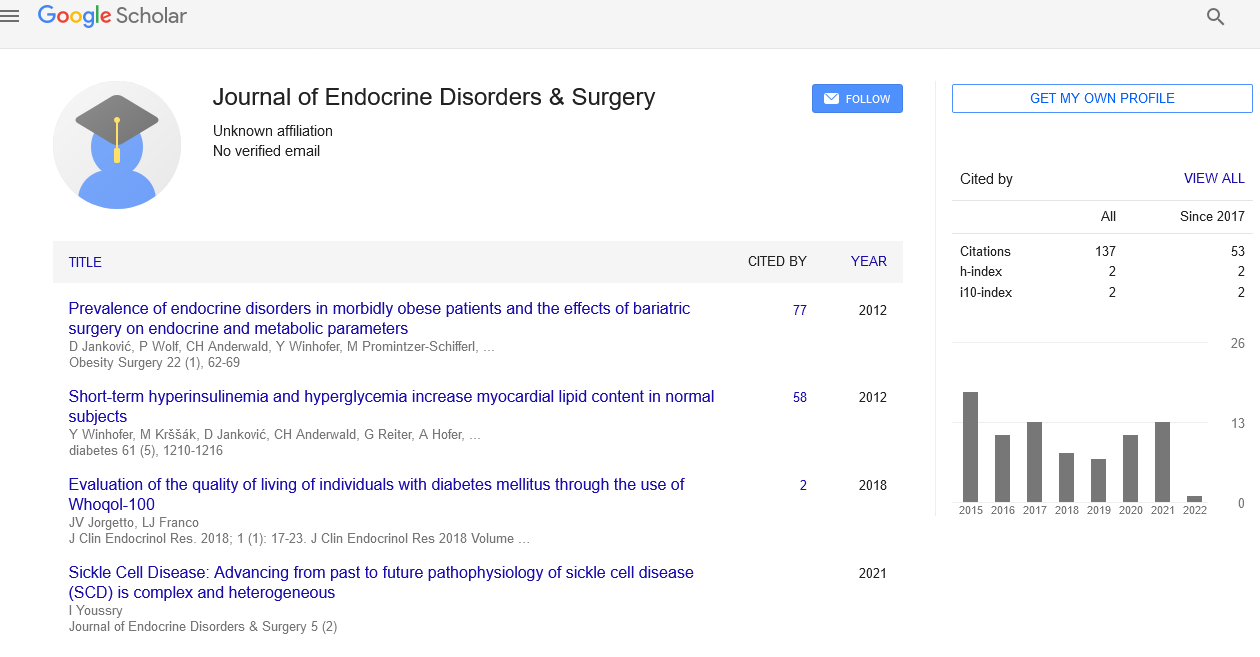Impact of concurrent thyroid pathology on surgical intervention for primary hyperparathyroidism
Received: 24-Jul-2019 Accepted Date: Aug 12, 2019; Published: 19-Aug-2019
Citation: Casey MC, Mozo M, McVeigh TP, et al. Impact of concurrent thyroid pathology on surgical intervention for primary hyperparathyroidism. J Endocrine Disorders & Surgery 2019;3(1):1-5.
This open-access article is distributed under the terms of the Creative Commons Attribution Non-Commercial License (CC BY-NC) (http://creativecommons.org/licenses/by-nc/4.0/), which permits reuse, distribution and reproduction of the article, provided that the original work is properly cited and the reuse is restricted to noncommercial purposes. For commercial reuse, contact reprints@pulsus.com
Abstract
Objectives: Minimally-Invasive Parathyroidectomy (MIP) is the gold standard treatment of primary hyperparathyroidism in single-gland disease with adequate pre-operative localization. The study aim was to evaluate the effect of concomitant thyroid pathology on the accuracy of pre-operative localization for primary hyperparathyroidism and impact on the surgical approach.
Methods: A retrospective cohort analysis of patients undergoing surgical intervention for parathyroid disease in a tertiary referral center from 1999 to June 2014 was conducted.
Results: Of 429 parathyroidectomies performed on 424 patients, coexistent thyroid pathology was identified in 68 patients (16%). The sensitivity of pre-operative localization of parathyroid pathology in these patients was considerably lower than in patients without concurrent thyroid disease: ultrasonography 55% vs 63%, 99mTc-sestamibi scintigraphy 50% vs 60% and CT 47% vs 49%. Single-gland disease was present in 58 patients (85%), but correctly identified on pre-operative imaging in only 43%. Of these 58 patients, 45 (66%) required Bilateral Neck Exploration (BNE), with MIP in 23 (34%) with a conversion rate of 13%. All conversions resulted from intra-operative identification of thyroid disease. Of the remaining open procedures, 40 (88%) were conducted with simultaneous thyroid lobectomy/total thyroidectomy, 2 (4%) due to multi-nodular goitre, and 3 to thyroiditis and thyroid nodules/cysts. The biochemical cure rate was 100%. In 84 months median follow-up, no patient experienced persistent or recurrent hypercalcemia, or required re-intervention.
Conclusion: Concurrent thyroid pathology reduces the sensitivity of pre-operative localization of parathyroid pathology and results in higher rates of open parathyroidectomy in single-gland disease.





